
Be Inspired
Whether you're in need of a spark, a glimpse of hope, or a reminder of why we give ourselves to this work, this blog will meet you there with practical ideas, creative solutions, and stories to sustain us.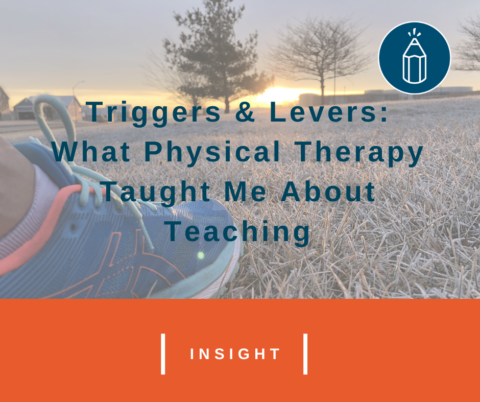
Triggers & Levers: What Physical Therapy Taught Me About Teaching

Like all compelling conversations, this one didn’t leave me. I’ve been turning it over in my head ever since, trying to discover what’s underneath that resistance, that hesitation to “teach the whole student.” I can imagine some pretty legitimate responses: There’s so much pressure to cover so much content; I would do more if I could. I see 170 kids a day and you want me to do what? I also imagine some pretty honest responses like that’s not my job or that’s what the counselors are for or I’m not qualified to do that work.
But underneath them all is a sense of separateness, a sense that if we pay really close attention to one facet of a student it will compensate for the parts we set aside for someone else. It reminded me of this note I wrote for my physical therapist this fall – a wonderful person who carefully helped me take a leg that would persistently go numb from hip to toe, to a strong limb I could rely on for regular catharsis. Here’s an excerpt that’s really more a plea to myself than to my amazing physical therapist:
Teachers may not be therapists, but if we fail to understand that learning isn’t a product of a well-positioned assessment or comprehensive rubric, we have failed to see that the invisible levers we’re pressing still compel the whole child.

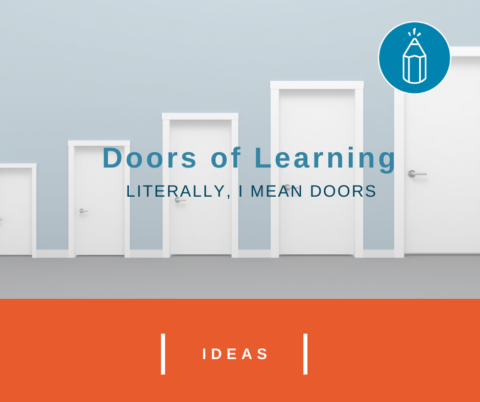
Doors of Learning (Literally, I Mean Doors)
I’m sure you’ve had this everyday experience too. The one where you pick up a photo that has appeared unchanged forever, until you pick it up and realize the edges are faded, the corners yellowed. For me, it’s not so much the fading, but the realization that time has, indeed, changed the surface while I wasn’t paying attention. Sometimes it takes a little fading to incite change.
That was my experience on a hot July day this summer when I went to my classroom to retrieve a book I was safely stashing there and in turning over the corners of all the familiar markers of learning in our room, I realized the colors actually weren’t as bright or crisp. I felt that twinge of having lost vigilance and proclaimed, “I’m starting over!” So back to the bare walls. Everything familiar, I stored away. The clean slate gave me a chance to think, yet again, about what learning should look like in this space. And I looked at the huge concrete wall across the back wall, the one that always felt like lost space.
I wanted to cover it. But I couldn’t use any hardware to attach anything. New paint could only be decided by district staff, not me. For several weeks, I wondered, I wandered, I worried. Then a conversation with my neighbor gave me an idea. Doors. What if I turned doors into huge, movable whiteboards and chalkboards? Suddenly, I found the new focal point of the classroom: the back of the room, not the front. With lots of blank spaces for students to cover, rather than ones I’d already filled up. And just in case you like a good painting project, here are the phases.
From usual doors to chalkboard doors with a little chalkboard paint!
Then, create whiteboard centers with Idea Paint and add some color around the edges.
But the best part…using them!


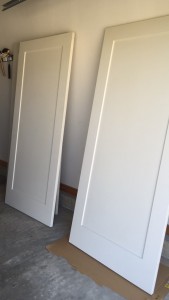
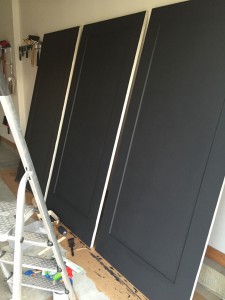
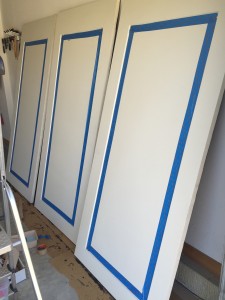
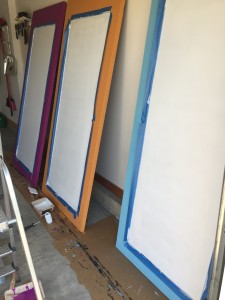

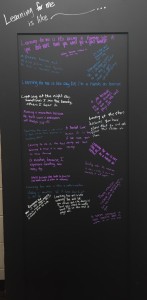
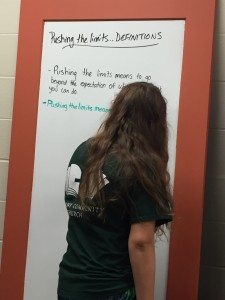
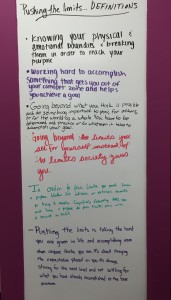
Comments